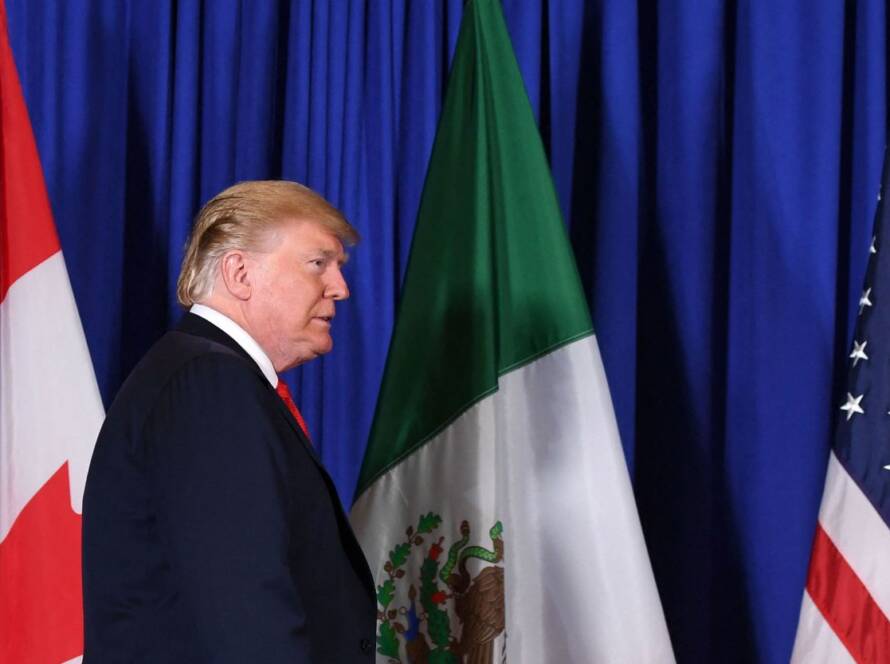By Kasun Thilina Kariyawasam
“The dollar is our currency, but it’s your problem.”
John Connally, US Treasury Secretary, 1971
In the post-COVID global economy, Emerging Markets were hit with a double-whammy downward spiral. Even prior to the pandemic, Emerging Markets (EMs) were struggling with high inflation, lack of investment, unemployment, and other issues.
Then COVID-19 happened, throwing 120 million people into extreme poverty. The pandemic severely weakened these economies. In 2020 they had an average public debt-to-GDP ratio of 64%. According to IMF forecasts, by 2026 these countries will have a public debt-to-GDP ratio of 74%.
Some players have, to be sure, made it faster than others. One of these stronger players is China, which is the second largest economy in the world and maintains a robust growth rate.
China is an outlier among EMs for a number of reasons. Its foreign exchange reserves are considerable, valued at more than USD 3 trillion as of December 2022. These have enabled it to withstand external shocks. China also has large amounts of commodity reserves. As a result, it has multiple options at any given point to adjust its economy. Its closed capital account allows it to design outflow buffer policies. In cases of sudden, extreme outflows, its closed capital account can mitigate shocks.
As China has a large domestic market for its own debt, its reliance on foreign agents is relatively low compared to other EM players. Although non-public debt is somewhat higher, Chinese public debt is also low compared to other EMs. Moreover, the country has a huge amount of aggregate savings, which enables it to keep its banking balance sheet more sanitized.
In the early months of the pandemic, most EMs cut their rates as a response to the pandemic. There are some countries that offer fiscal subsidies ranging from direct cash transfers to tax reductions. Because of the limited fiscal capacity of EMs, however, these policies had very little impact both in mediating the crisis and boosting growth across those economies.
In the aftermath of the Federal Reserve and other developed countries enforcing Quantitative Tightening (QT) measures, most EM countries slipped down. Many of these countries experienced fuel and other commodity shortages. Some of them declared bankruptcy.
The negative distributional effects of higher interest rates (in conjunction with financial austerity) will not only decrease the growth potential of Emerging Markets, it will also reduce the size of the serviceable debt. Moreover, excessive monetary tightening could lead to financial instability and crises in the EMs, given their already high public and private debts.
A drastic tightening of US monetary policy can only result in currency depreciations, aggressive financial outflows, higher risk premia, weaker credit positions, and lack of access to dollar credit and liquidity, the latter of which is needed for exports and investment. Rising interest rates in the US will stymie growth in emerging economies and further constrain their macroeconomic policy options.
Structural weaknesses of Emerging Markets
Exports from Emerging Markets are mostly of low-value-added products. These products range from raw materials to intermediary products. The contribution of emerging market capital goods to the global economy is very low. China and South Korea are both outliers in this regard.
Most exports from these countries are highly competitive in the global market, with the exception of rare earth minerals: due to their finite supply and geographical restraint, rare earth minerals are what one could call natural constraint goods. Indonesia has shown some resilience to inflation in the current economic environment due to its exports of rare earth minerals.
In a high-interest environment, low-value addition leads to a squeeze on capital absorption. The balance sheets of most low-value addition exporters tend to be in the red, as they face difficulties in acquiring raw materials. Because of the uncertainty of their export prices, emerging market exports normally tend to weaken during strong dollar periods, such as what we are going through today.
Moreover, EMs are characterized by a growing service sector with low value addition. They include hospitality and IT. Compared to the manufacturing sector, the service sector maintains a low stock of capital. This tends to contribute to economic volatility.
Besides being cyclical, such sectors are also highly vulnerable. For instance, Sri Lanka generates USD 2 billion in tourist revenue every year. As a result of the Easter attacks and COVID-19, the tourism industry lost much revenue. This had a significant impact on economic performance thereafter.
In general, EMs choose services because of their low-skilled labor force and low entry requirements. The composition of the service sector of EMs illustrates this clearly. Most service sectors are low-skilled. As a result, most Emerging Markets have a lower leveraging capacity compared to advanced economies. This is evident from the way their financial markets have responded to recent rate hikes.
In most Emerging Markets, productivity needs to be increased and modern infrastructure needs to be built. However, the risk scale of these investments is relatively high, especially in an environment of a rising dollar. As a result, local banks in EMs will have to reduce their appetite for risk. The unwillingness of banks to lend to EMs continues to be a challenge in their efforts to industrialize.
More worryingly, liquidity hiccups arising from the appreciation of the dollar can cause certain firms to hoard foreign exchange. This tends to exacerbate the tightening of the dollar climate already in place. In most Emerging Markets, exporters are not surrendering their foreign exchange earnings to their own currencies. We see this clearly in Sri Lanka too.
There is already a black-market price for USD in most EMs due to the high demand for dollars. The enforcing mechanisms of most Central Banks are somewhat weak. Due to this, enforcement will be somewhat lukewarm, particularly in the absence of proper macroeconomic solutions.
Policy options for Emerging Markets in a high-rate climate
The most obvious solution for Emerging Markets is to decouple from the US dollar. Since the US dollar is the preferred currency across much of the world, however, decoupling is a long-term process. No economy, no matter their size, can diversify into other currencies in the short term. The current stronger dollar climate has effectively raised the dollar’s status as the premier currency in global trade. The US economy itself absorbs a large portion of global trade from EMs.
In order to mitigate their currency risks, though, EMs will eventually have to diversify their currency baskets. A diversification strategy can be implemented in two ways.
First, EMs should segment their imports and find alternatives to their USD imports. For example, most EMs purchase petroleum in USD. A better alternative would be to buy from different countries in their own local currencies.
Such options are available in the global economy, and some EMs are already doing so. Oil is currently being bought by India in rubles, and several countries had petroleum contracts with Iran. The Petro-Yuan is a more recent development. Through this initiative, the Shanghai Petroleum and National Gas Exchange now enables countries to purchase petroleum in yuan.
Second, EMs should implement an export netting strategy. Export diversification is more medium- to long-term. The strategy should be mediated by the fiscal arm of the State, and a policy credit system should operate in parallel, so as to incentivize and facilitate export diversification.
Additionally, EMs should focus on signing trade pacts with countries based on mutual agreements. Countries that are strategically important to EMs should be targeted in this respect. For instance, Sri Lanka would benefit immensely from signing an FTA with China, the world’s largest consumer market. Asia is also home to the world’s biggest trading bloc, the Regional Comprehensive Economic Partnership (RCEP). In addition to representing 30% of the world’s population (2.2 billion people), it accounts for 30% of global GDP (USD 29.7 trillion), making it the world’s largest trade bloc.
Cross-border trade can also be done, using old-fashioned barter. A cross-border barter system is already under discussion between Iran, Malaysia, Turkey, and Qatar. The anchoring of exchange can be through the use of either a common currency basket or a barter ratio system. The use of barter systems will not only ease dollar dependence, but will also allow countries to manage their deficits better.
A cross-border settlement corridor is another policy tool available to EMs. There are two ways to set up these corridors: manually and semi-manually. Through them, countries can trade more sustainably and efficiently, without the risk of piling up huge trade deficits.
The most recent addition to the policy space is the Central Bank Digital Currency (CBDC). With CBDCs, cross-border wholesale settlement is possible, in addition to regular wholesale settlements. With the help of CBDCs, countries can manage what are called “alternative currency poolings”, which allow EMs to better manage their inflows and outflows.
Wholesale Coins (wCBDC) are programmable coins that countries can issue and exchange. Other initiatives are in the pipeline as well. A multi-CBDC platform, known as mBridge, is being built by the BIS Innovation Hub, established by the Hong Kong Centre, Hong Kong Monetary Authority, Bank of Thailand, Digital Currency Institute of the People’s Bank of China, and Central Bank of UAE.
A second project called Jura will be operated by a third party for the direct exchange of Euro and Swiss franc wholesale Central Bank Digital Currencies (wCBDCs). Using Payment versus Payment (PvP) and Delivery versus Payment (DvP) mechanisms, tokenized asset and foreign exchange trade can be settled safely and efficiently. Projects like Ubin, Khokha, and Stella all use these mechanisms.
Of course, the long-term strategy would be to shift from low-value-added exports to high-value-added exports to strengthen the economy. As mentioned earlier, most EMs export low-value-added products. In order to gain more leverage in trade, they must increase their value addition.
It will certainly be a challenge for Emerging Markets to cope with a strong US dollar climate. This analysis has suggested and recommended a few policies these economies can try to mitigate such challenges. It remains to be seen, however, whether their governments will opt for them.
Kasun Thilina Kariyawasam is a macroeconomist who works for the fund management sector in Sweden. He can be reached at kasunkt@hotmail.com.
Factum is an Asia Pacific-focused think tank on International Relations, Tech Cooperation and Strategic Communications accessible via www.factum.lk.
The views expressed here are the author’s own and do not necessarily reflect the organization’s.


